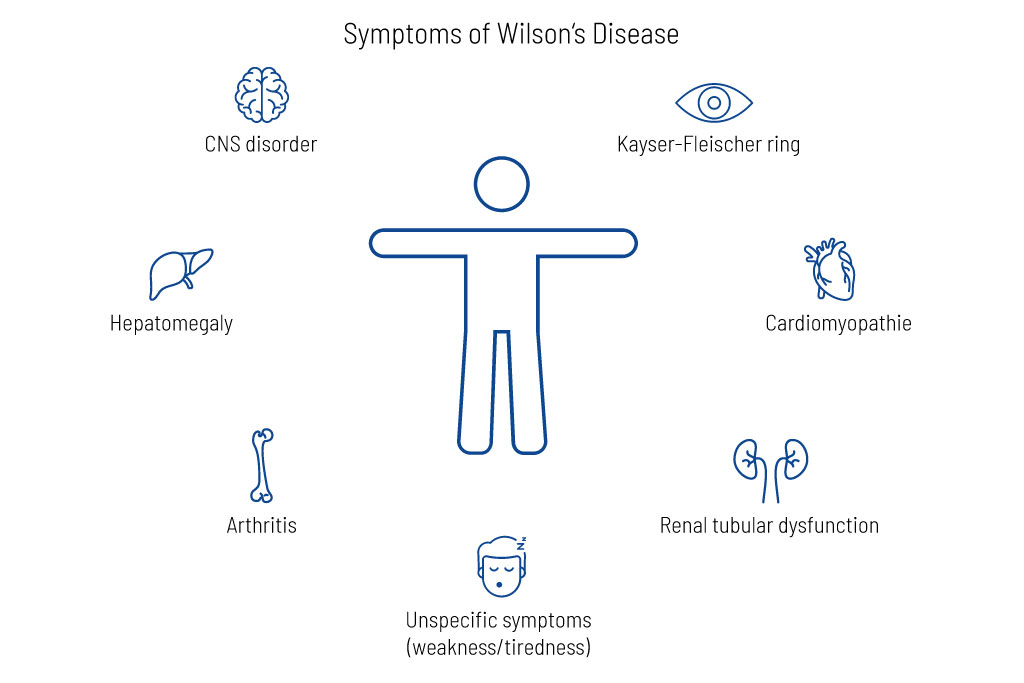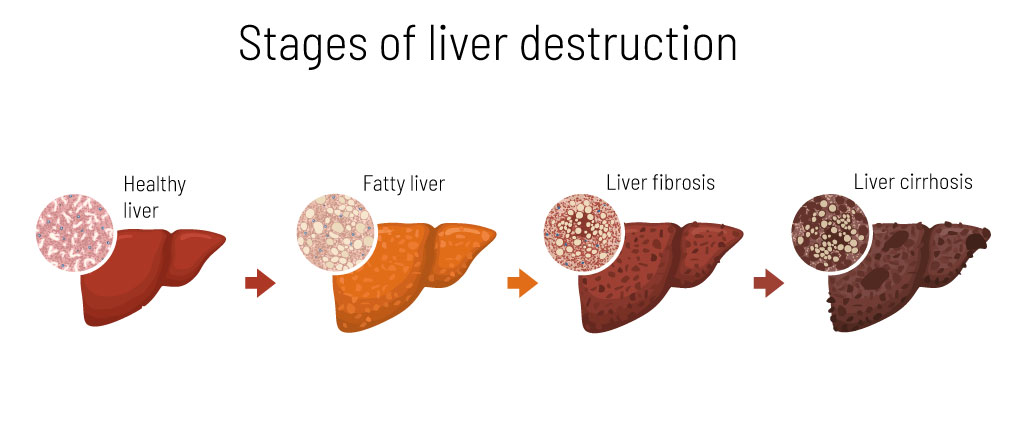With an iron or copper storage disorder, the micronutrients iron or copper accumulate excessively in the body and can harm the organs. Early diagnosis of this metabolic disease aims to minimize associated complications and to improve the quality of life of affected people.
Are you insured in Germany? Our colleagues at Zentrum für Humangenetik Tübingen will gladly support you!
What Are Iron and Copper Storage Disorders?
The trace elements iron and copper are essential for our body, as they are involved in important processes such as oxygen transport and the transmission of stimuli in nerve cells. In people with iron or copper storage disorders, the balance between absorption and excretion of those elements is disturbed. As a result, excessive amounts of these substances can accumulate in several organs and tissues, which can cause various damage and associated symptoms.
The symptoms are usually unspecific at first. For example, weakness, tiredness, abdominal pain or weight loss may occur. This makes the diagnosis of such a disease difficult at first without genetic analysis.
The copper storage disorder Wilson’s disease can lead to an increased accumulation of copper in the liver, the eye, the central nervous system and other organs (figure 1). This results in a diverse pattern of symptoms.
In the long term, the accumulation of too much iron or copper can also cause organ-specific symptoms, such as damage to the liver (e.g. liver cirrhosis and liver carcinoma) (figure 2).
Field Report
Tamika K., 24 years old
Lifestyle: health diet, very active in sports
Result: our preventive diagnostics for Tamika K. identified a variant in the gene HFE that increases the risk for the iron storage disorder hemochromatosis.
Consequence: Tamika K. participates in regular preventive checkups and will receive, if necessary, a therapy to treat hemochromatosis to avoid symptoms and sometimes irreversible organ damage.
“I was surprised to find out that I have a variant that can cause a condition called hemochromatosis. This condition causes an accumulation of iron in the liver. Fortunately, it is possible to treat the disease and thus avoid complications as far as possible.”
How Does Genetic Risk Assessment Work?
Preventive genetic analysis with the help of next-generation sequencing (NGS) technology can predict the risk of getting a certain disease before its outbreak.
In the module Iron and Copper Storage Disorders, eight genes are examined that play a role in the functioning of the iron or copper metabolism. If respective disease-causing changes are detected, those people can start an adequate therapy when necessary and prevent possible damage.
You Are also Welcome to Take a Look at the Following Areas
Contact Us
Do you have a question, or are you interested in our service?
Diagnostic Support
We will assist you in selecting the diagnostic strategy – whether as a person seeking advice or as a physician.






